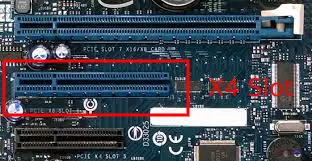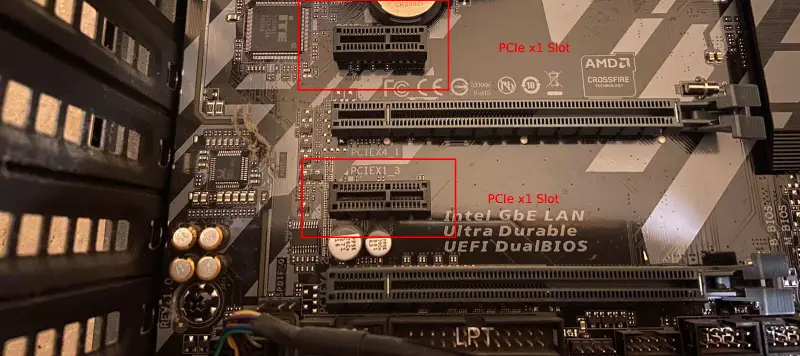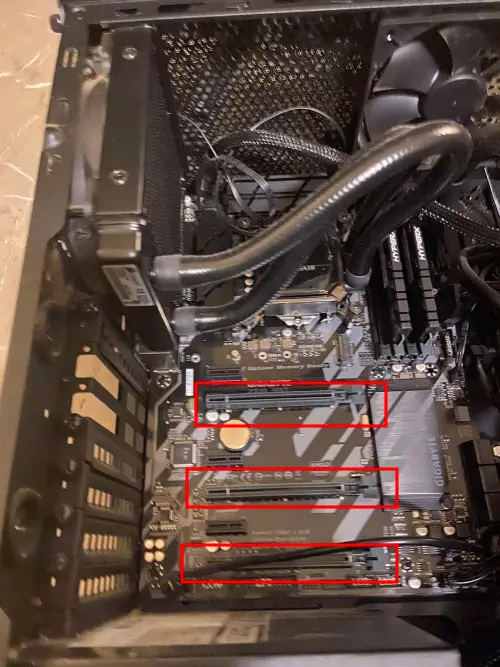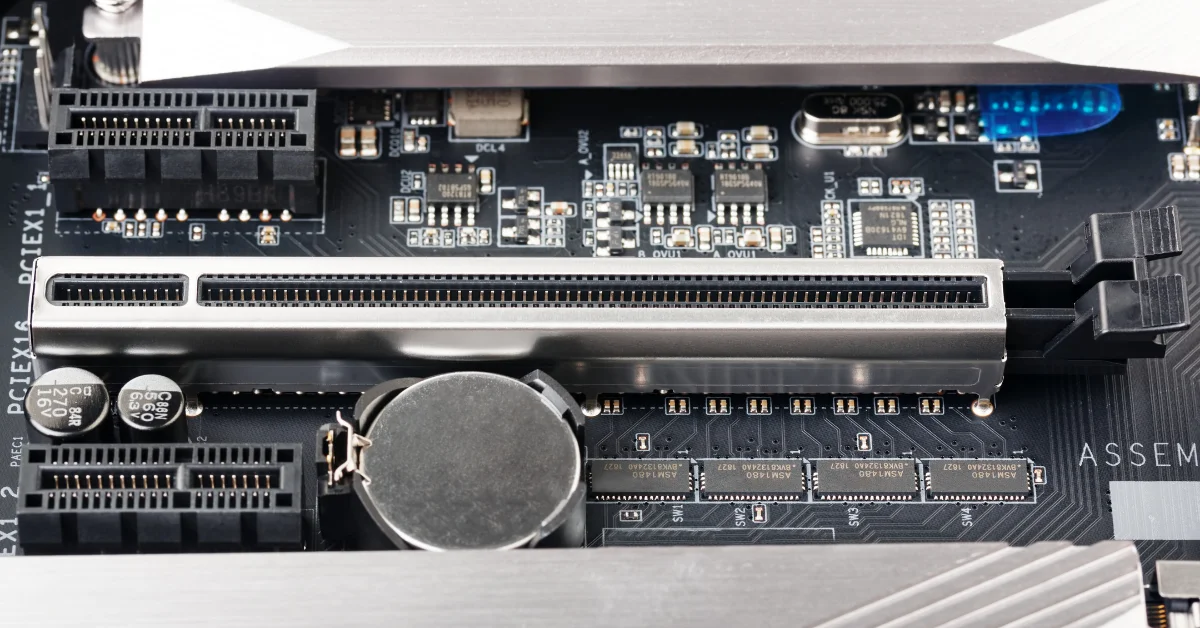There is a big confusion amongst computer enthusiasts with all the different kinds of PCI Express (PCIe) slots. There are different generations, different speeds, and different sizes, but why should you care?
In this article, I am going to cover everything you need to know about the PCIe x16, from what it is, what the x16 means, and why you should care.
So, without further ado, let’s get started with the basics and talk about what the PCIe x16 is.
What is a PCIe x16?
the PCIe x16 slot. The main difference between them is that the x8 slot has only 8 lanes while the x16 has 16.
This slot is mostly used for a second GPU, although you will also find RAID controllers and other high-end expansion cards that require more than x4 lanes and can be plugged in this slot.
PCIe x4 Slot

The PCIe x4 slot has only 4 lanes, and it’s a really common slot.
This slot is mostly used for SSDs that use the NVMe protocol since they don’t need more than x4 lanes to reach their full potential.
You will almost never see a graphics card in this kind of slot because even the slowest ones need at least x8 lanes to work properly.
PCIe x1 Slot

This is the smallest and slowest PCIe slot. It has only one PCIe lane, and it’s mostly used for sound cards, WiFi adapters, and other low bandwidth devices. If you want to know about the PCIe x1 slots, read our complete guide, “What Are PCIe x1 Slots And What They Are Used For.“
What are the PCIe x16 slots used for?
You probably guessed it by now, but the PCIe x16 slots are used for graphics cards. The GPUs are the devices that require the most bandwidth, so they need a slot that can offer them a lot of lanes.
What you should pay attention to when plugging the graphics card into the PCIe x16 slot is to choose the PCIe x16 slot with the highest number of lanes.
For example, if your motherboard has two PCIe x16 slots, make sure to plug your GPU into the one with the most lanes, which is usually the top closest to the CPU.
If you plan to add more than one graphics card to your computer and use SLI or Crossfire, keep in mind that both cards will run at x8 speed in most cases.
Related Article: How To Check If PCIe Slot Is Working? [Solved]
Where are the PCIe x16 slots located?

The PCIe x16 slots are located on the bottom part of your motherboard, close to the I/O ports. This is because the PCIe devices you are going to plug into these slots will have some ports that need to be accessible from the back of your computer case.
What is the difference between PCIe and PCIe x16?
There is no difference between PCIe and PCIe x16. The PCIe x16 slot uses the Peripheral Component Interconnect express interface, and the x16 it’s just a physical specification that denotes how many lanes the slot has.
Do I have a PCIe x16 Slot?
To see if you have a PCIe x16 slot on your motherboard, you will need to find its manual and look for it there.
If you don’t have the manual, the best way to find out is to visually inspect the motherboard. The PCIe x16 slots are longer than other slots (89mm) and are located close to the I/O ports.
Is it significant which PCIe x16 slot I use for my GPU?
Yes, which PCIe x16 slot you use for the graphics card is significant. You should always use the PCIe x16 slot that has the most lanes because it will offer better performance. It is the one that is located closest to the CPU.
Related Content: Does It Matter Which PCI-e x16 Slot I Use?
Conclusion
I think I have covered everything you need to know about the PCIe x16 slots. If you have any questions feel free to ask them in the comments section below, and I will try to answer them as soon as possible.

